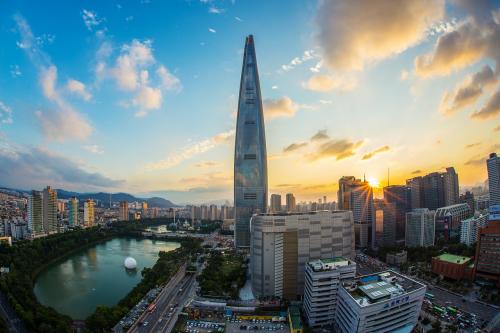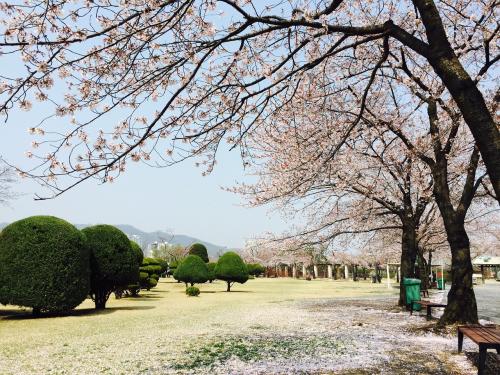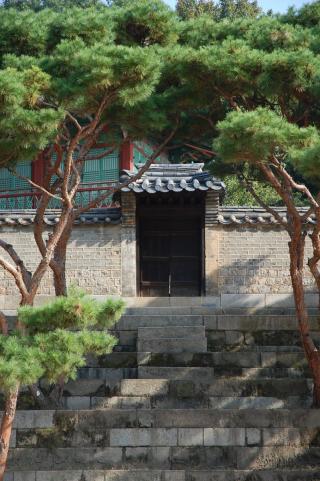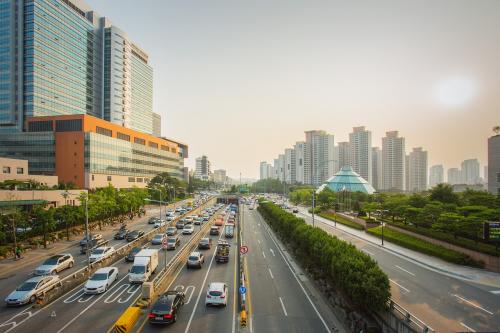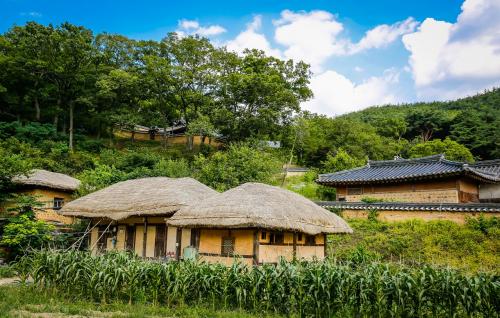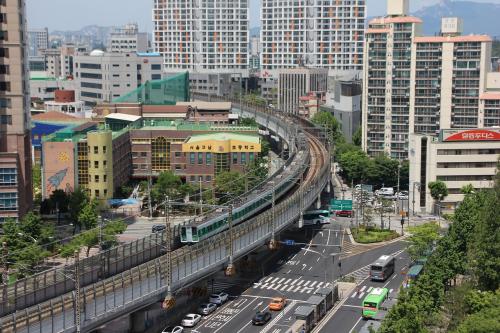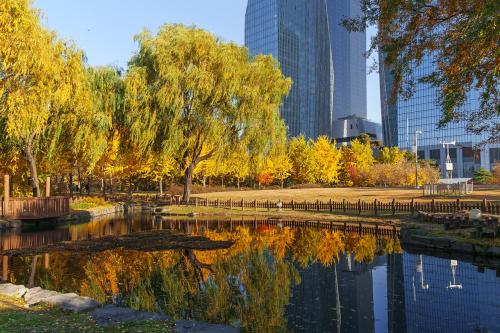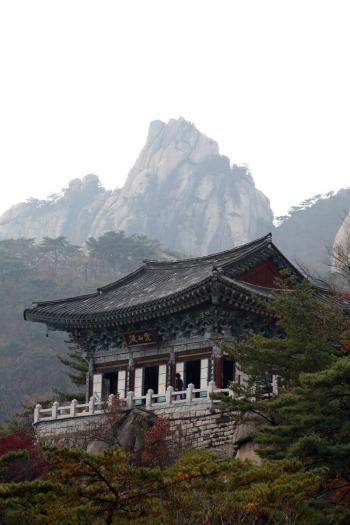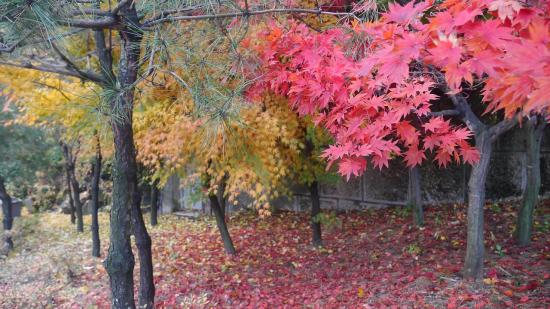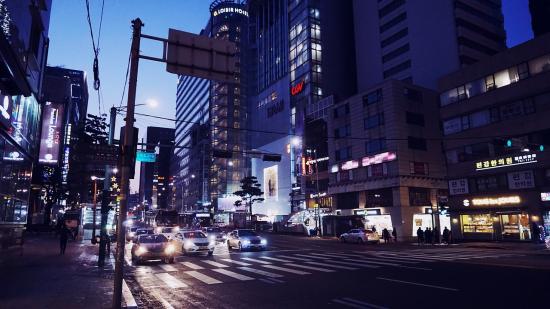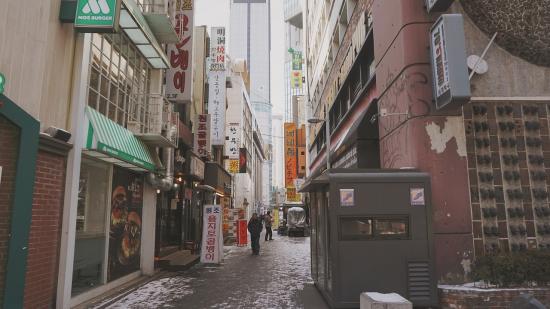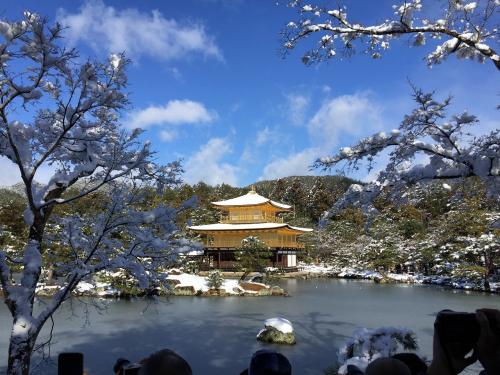Seasons in South Korea
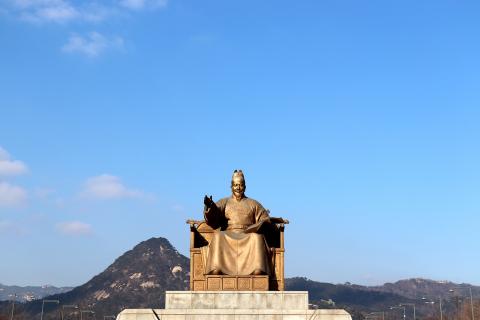
South Korea is a friendly country c amazing centuries-old traditions. The amazing thing is that it's quite harmoniously intertwined structures of ancient Asia c high-tech industry and a highly developed service sector.
"Land of the morning calm" is a figurative expression derives from the word "Choson" — the name of the last Korean Kingdom. "Cho" means "morning" and "son" is "light". "Bright morning" evokes the image of the sun rising over the rice fields and burning the mist in the mountains, the image of a morning of peace and quiet when you can, breathing in fresh air, recharge and prepare for labor day, forever moving, constantly dynamic Korea.
In most parts of South Korea is dominated by a temperate climate, so the change of seasons there is quite palpable. Warm and short spring and autumn are the most favorable. In these seasons the weather is warm, but not hot. For the summer we have the rainy season that begins in late June and ends in about a month.
The last time such a tourist destination, like South Korea has a more extensive demand for our travel enthusiasts. For this reason, I decided to collect in this article useful information for tourists who only plan their trip to South Korea, or just interested in this country in Asia. Maybe this little information will help someone c spend time in the journey, a someone may push on an unplanned tour to South Korea.
In the representation of a human being, never falling to South Korea in July, monsoon season is just a few weeks of unpleasant weather, with frequent precipitation. But hardly anyone can imagine the scale of this phenomenon. Constantly erupting from the sky water flows, deafening peals of thunder and lightning flashes constantly – this is just the tip of the iceberg. Rains bring coolness in summer day, as it happens in the subtropics, quite the opposite – the humidity is increased to unimaginable level, the air is constantly filled with fumes. To breathe such air for a person unaccustomed to the climate of South Korea is quite difficult and unpleasant.
Seasons
Contents:
Spring in South Korea
Korean spring starts in March with a flurry of colors. In mid-March, the most southern point of Korea, jejudo island, the splendor pours yellow flowers of rapeseed. After cherry blossom, flaming Azalea, forsythia, fragrant Magnolia. These messengers of spring appear on the mainland in late April, and then all the mountains and parks in Korea are painted in bright colors.
Climate of the Spring Months
| March Max average t°: + 8 °C (46 °F) Min average t°: -2 °C (28 °F) Sundial in the day: 7 hours Rainy days: 6 days Precipitation: 55 mm (2.2") Water t°: +5 °C (41 °F) |
| April Max average t°: +17 °C (63 °F) Min average t°: +5 °C (41 °F) Sundial in the day: 8 hours Rainy days: 6 days Precipitation: 70 mm (2.7") Water t°: +8 °C (46 °F) |
| May Max average t°: +22 °C (72 °F) Min average t°: +11 °C (52 °F) Sundial in the day: 8 hours Rainy days: 7 days Precipitation: 85 mm (3.3") Water t°: +13 °C (55 °F) |
(Seoul)
Spring Holidays
March, 1 – the day of the independence movement of Korea;
March, 8 – International women's day;
April, 4 – arbor day in South Korea;
May, 5 – children's day in South Korea;
May, 14 – Buddha's birthday in South Korea.
The greatest number of Sunny days falls on the period from March to may.
Summer in South Korea
In the summer have a very popular seaside resorts with great beaches, plenty of shops and unique dining options featuring traditional Korean food. Travelling with children tourists choose to stay in the main island of Cheju-do, a youth and fans of night life and disco clubs – resorts Namsam and Busan. On the Han river in Seoul and in many other places across the country has all the conditions to enjoy summer sports under the clear summer sky. Developed as water skiing, Windsurfing, rafting, diving and so on. The best place to stay is the island of Jeju, with the most pure and well-preserved nature, he is in the top ten of the world's best holiday destinations, visited by over 5 million people per year.
In the summer the weather is quite sultry (mark thermometer sometimes reaches 35 degrees) and humid. From the end of June and mid-July, usually occurs during the monsoon season. Many tour operators at this time I do not advise a visit to South Korea, though actually the time monsoon rains not as bad as it really is. The rain usually takes place early in the morning, starting with a ten o'clock in the morning the weather was improving, although the humidity is quite large.
Climate of the Summer Months
| June Max average t°: +27 °C (81 °F) Min average t°: +16 °C (61 °F) Sundial in the day: 7 hours Rainy days: 9 days Precipitation: 170 mm (6.7") Water t°: +17 °C (63 °F) |
| July Max average t°: +29 °C (84 °F) Min average t°: +21 °C (70 °F) Sundial in the day: 6 hours Rainy days: 14 days Precipitation: 360 mm (14.2") Water t°: +22 °C (72 °F) |
| August Max average t°: +31 °C (88 °F) Min average t°: +22 °C (72 °F) Sundial in the day: 6 hours Rainy days: 10 days Precipitation: 225 mm (8.8") Water t°: +24 °C (75 °F) |
(Seoul)
Summer Holidays
June, 6 – day of memory of victims in South Korea;
June, 9 – Festival Gangneung Dano in South Korea;
July, 17 – Constitution Day in South Korea.
Autumn in South Korea
Autumn in Korea, with its invigorating air and pure blue skies – this is the most favorite Korean season. Autumn, time of harvest is a time of traditional ceremonies, leading its origin from the ancient peasant rituals and customs.
Climate of the Autumn Months
| September Max average t°: +26 °C (79 °F) Min average t°: +15 °C (59 °F) Sundial in the day: 7 hours Rainy days: 7 days Precipitation: 140 mm (5.5") Water t°: +23 °C (73 °F) |
| October Max average t°: +19 °C (66 °F) Min average t°: +7 °C (45 °F) Sundial in the day: 7 hours Rainy days: 5 days Precipitation: 50 mm (2,0") Water t°: +19 °C (66 °F) |
| November Max average t°: +11 °C (52 °F) Min average t°: 0 °C (32 °F) Sundial in the day: 6 hours Rainy days: 5 days Precipitation: 35 mm (1.4") Water t°: +14 °C (57 °F) |
(Seoul)
Autumn Holidays
September, 15 – "it's thanksgiving";
October, 3 – national Foundation day in South Korea;
October, 9 – the day of proclamation of the Korean alphabet.
Winter in South Korea
In winter, although temperature goes to freezing point, you can visit several ski resorts are world class. The ski season in Korea lasts from December to early March; most ski resorts open in late November.
In the winter time in South Korea is quite cold (-10 degrees) but dry weather. Occasional precipitation in the form of snow, rarely in rain.
In addition, in winter you can visit the numerous festivals. In Daegwallyeong Gangwon-up to the festival of snow and ice cultures, where you can enjoy a stroll through the enormous snow tunnel to admire the large sculptures and figures made of ice and snow. In the tea plantations in the Pawson is the light festival, which gathers a huge number of guests co all over the world to enjoy a unique light sculptures around the huge Christmas tree of the country.
Climate of the Winter Months
| December Max average t°: +3 °C (37 °F) Min average t°: -7 °C (19 °F) Sundial in the day: 5 hours Rainy days: 5 days Precipitation: 30 mm (1.2") Water t°: +5 °C (41 °F) |
| January Max average t°: 0 °C (32 °F) Min average t°: -9°C (16 °F) Sundial in the day: 6 hours Rainy days: 3 days Precipitation: 17 mm (0.7") Water t°: +5 °C (41 °F) |
| February Max average t°: +3 °C (37 °F) Min average t°: -7 °C (19 °F) Sundial in the day: 6 hours Rainy days: 3 days Precipitation: 20 mm (0.8") Water t°: +5 °C (41 °F) |
(Seoul)
Winter Holidays
December, 25 – Christmas;
January, 1 – New Year.
 Seasons of the Year
Seasons of the Year 
